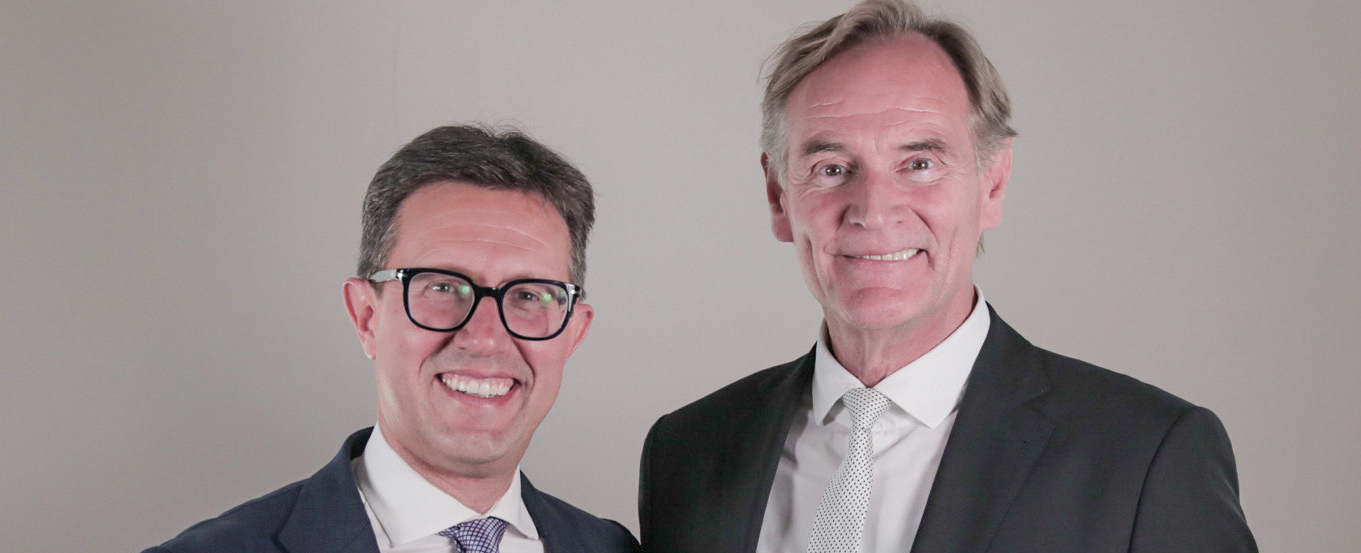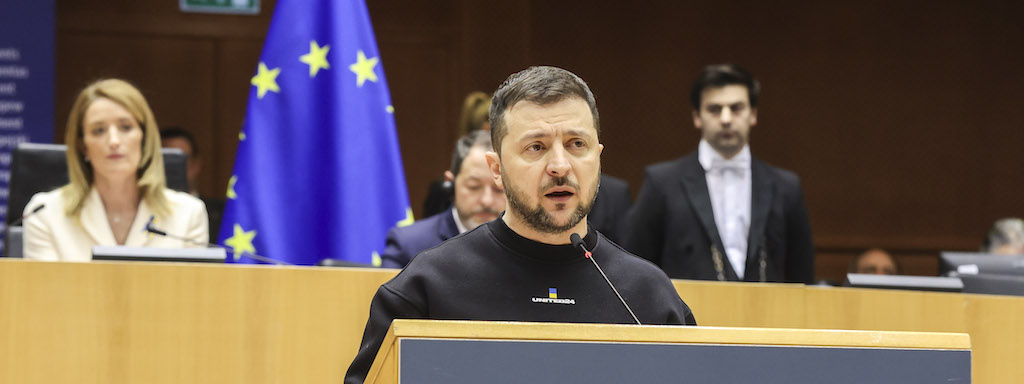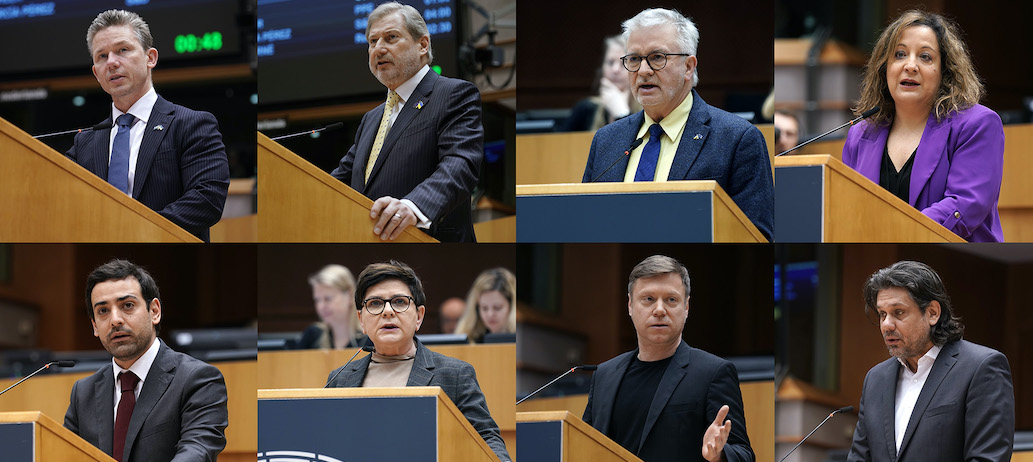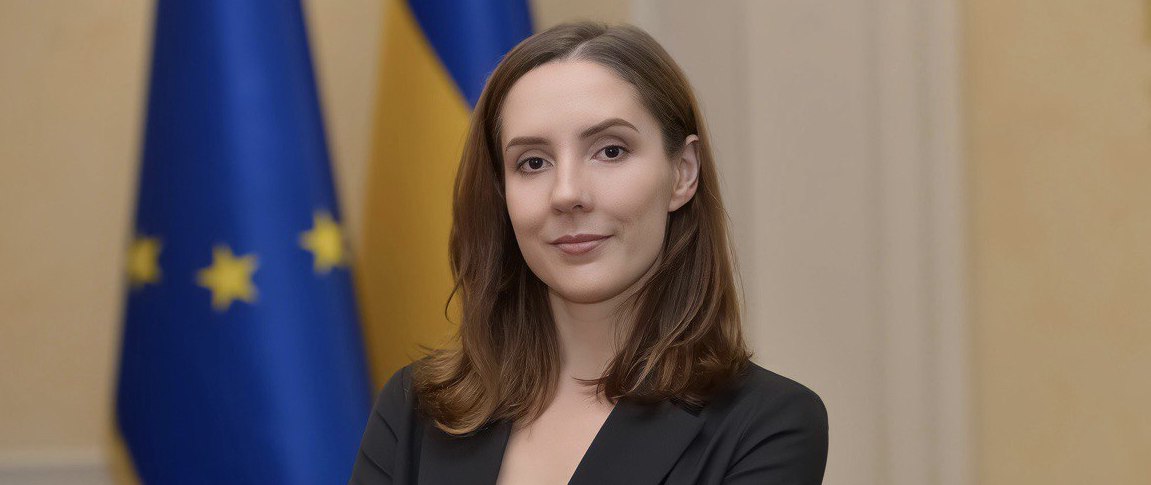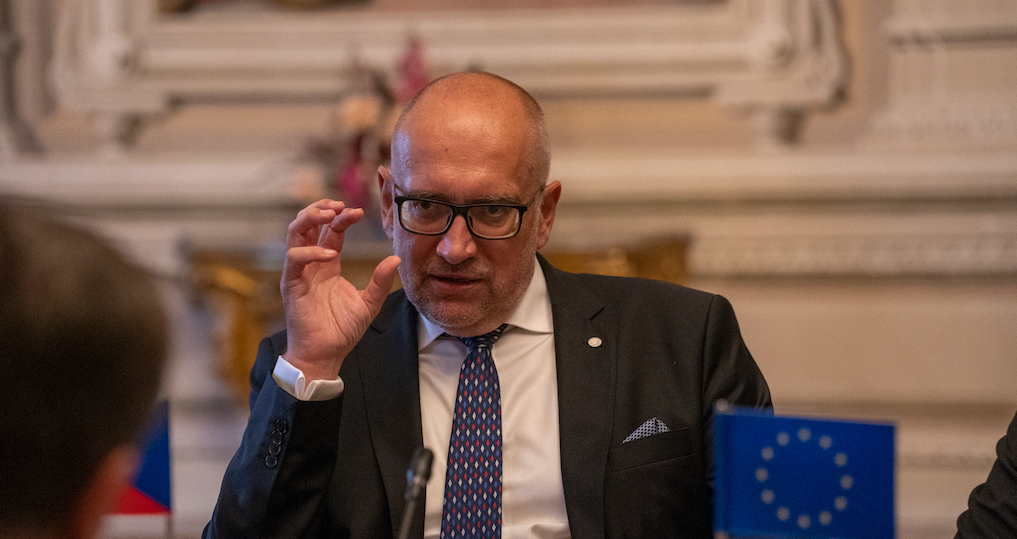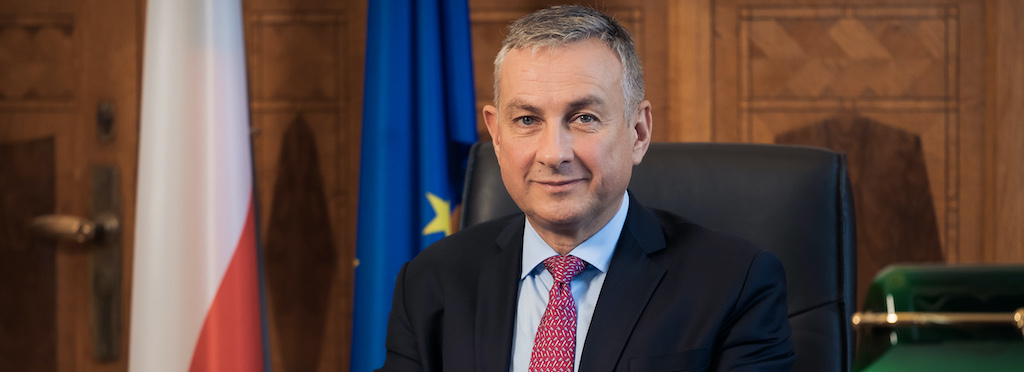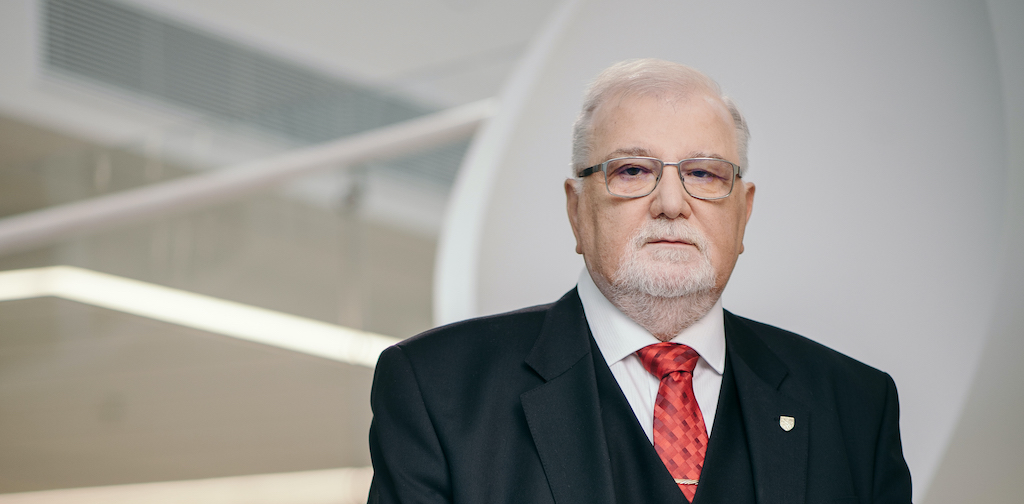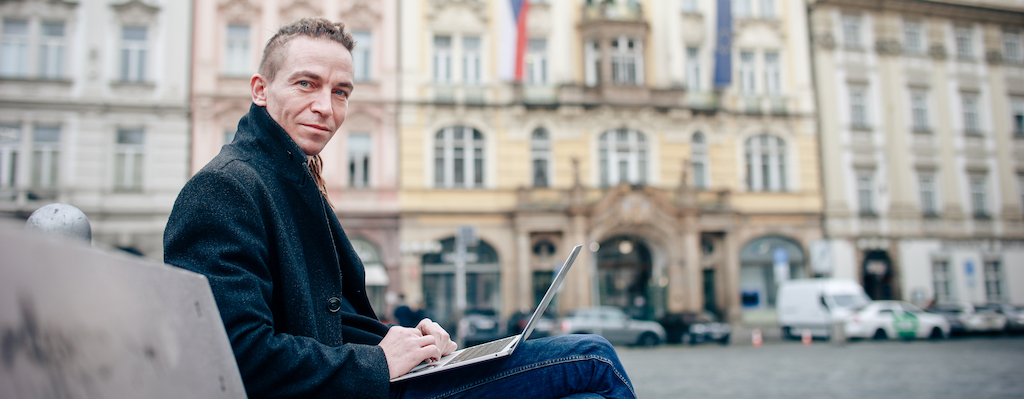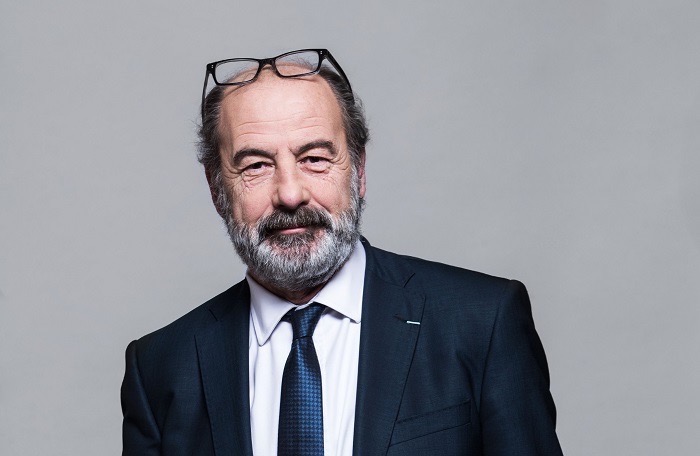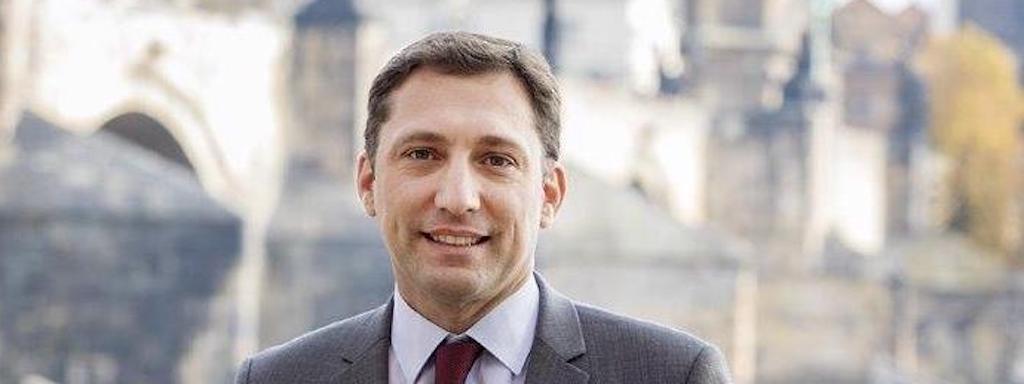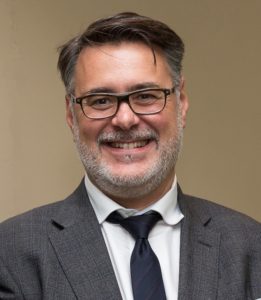
Interview with Vincent Dufour, Head of EDF European Affairs
EDF welcomed the Energy Union plan as soon as it was launched by the Juncker Commission. You are Europe’s leading electric utility, the biggest producer of renewable energies and the number one nuclear power operator in Europe, serving more than 35 million customers a day… As the EU changeover approaches, it seems a good time to review what has been done: how would you describe the progress made on the outgoing Commission’s flagship project and, more generally, on the European energy transition?
Before looking ahead to the next EU elections, which will be all-important for the future of Europe, I’d like to talk about where we’ve been.
Europe has not seen any major conflicts for 60 years now. It has attracted foreign investment and introduced social policies that are more generous than in most parts of the world. These are real accomplishments. We did not get where we are today by chance.
The Europe we live in was built through the patient and determined efforts of past generations to create a space that was free, secure, competitive and united. We are now enjoying the fruit of those efforts. Today’s Europe may be far from perfect, but it does represent an unprecedented example of political construction around these four priorities, without which we would not be able to face the disorders of the world. This is particularly true in the areas of energy and the climate, where these four priorities are essential landmarks guiding us toward a successful and responsible transition.
It was these landmarks that inspired the Energy Union plan proposed by the Juncker Commission, which gave a name to Europe’s energy transition and placed a sharp focus on decarbonisation. Part of the path has been cleared, but our work is just beginning…
Let’s look at what’s been accomplished to date:
– Europe is a space where energy exchanges between Member States have risen steadily over the past 20 years. It has an increasingly integrated energy market, and regional cooperation and interconnections are expanding despite large disparities between countries’ individual situations. The European power grid is today the most interconnected in the world with 341 cross-border lines that even extend beyond the EU’s internal borders to link 34 countries. Moreover, the resilience of the power system has been strengthened thanks to the risk preparedness measures included in the clean energy package. Europe will thus be able to rely on robust mechanisms to ensure mutual assistance in the event of emergencies, leaving it better prepared to face major hazards and supply shortage risks.
– Since launching its carbon allowance market 15 years ago, Europe has been a pioneer in the world’s quest to tackle global warming. Some 11,000 power plants and industrial sites with high CO2 emissions are now part of the trading system, which was reformed last year. Late in 2015, the Paris Climate Agreement set out a path to limit global warming between now and the end of the century to 2°C. European citizens fully understand the importance of that goal: 92% of them say climate change is one of their biggest concerns for the future. On a global scale, the EU only accounts for 10% of emissions, meaning that it alone obviously cannot get the planet on track to meet the target, but it can clearly show others the way and even act as a political counterweight to the contrarian views of the president of the second largest emitter of greenhouse gases, the United States. Unfortunately, there is no “planet B” for us to fall back on…
– Europe can help tackle this global challenge by leveraging its world-class expertise in essential decarbonised generation technologies like hydro, solar, wind and nuclear power, which together make up more than half of the European energy mix. Today, Europe exports its electricity expertise to competitive markets across the globe as well as to populations for which access to electricity is still a vital issue. This is a core priority for our Group, and it is important that Europe’s expertise be protected and consolidated so it can claim its rightful place in future decarbonisation projects across the world.
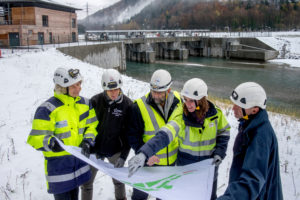
(Photo: @EDF – Bruno ANSELLEM)
On this topic, I should also mention an oft-overlooked fact that places EDF on the cutting edge of decarbonisation in Europe and the world: the electricity the Group produces has one of the lowest carbon intensities anywhere – 82g of CO2 per kWh compared with a European sector average of 275g. Because its energy mix primarily comprises renewables and nuclear, EDF is helping keep Europe’s average carbon factor relatively low. Without its contribution, the average European carbon factor would be a third higher, at 365g of CO2 per kWh produced.
Now let’s move on to what remains to be done
Multifaceted challenges still need to be overcome, and we must address them in ways that allow us to correct existing imbalances and avoid creating new ones.
– The first challenge is political and relates to Europe’s energy independence. There is no denying that the EU is growing ever more gas-dependent as its own resources become scarcer. The risk of becoming too dependent on suppliers outside the European Union, whether for imports of gas or of components that are vital to growing sectors of activity like solar power and storage, should remain a top priority for EU decision-makers during the next legislative cycle. We cannot have a resilient energy policy without an effort to limit dependence in an area like energy, which is essential both to citizens and to the economy as a whole.
Over the next 30 years, it will be even more important to accelerate the electrification of the European economy, using domestic and decarbonised resources: solar, wind, nuclear and hydro. Electrification efforts have stopped in several European countries in recent years. Germany’s case is the most worrisome: electrification there ground to a halt in 2005 while the country’s dependence on fossil fuels increased, pushing it to secure long-term gas supply via the Nord Stream 2 project. The best way to decarbonise the European economy is to achieve a much higher level of electrification than today’s extremely low 22%. Gradually lifting the rate above 40%, and even toward 60% in 2050, would translate into a 95% reduction in carbon emissions, in line with the Paris Agreement targets. Given progress made with energy efficiency, raising the electrification rate to 40-60% would result in moderate growth over the period in electricity demand, which has proved easy to absorb in the past (barely over 1% a year), and require grid strengthening (including interconnections) at a pace comparable to the past two decades.
– The second challenge is economic and financial: Europe must be able to count on sufficiently competitive European energy operators in a world where international competition is fierce. While remaining open to the trading that benefits it greatly, Europe must continue to give itself the means to fight dumping practices that could weaken it or put its energy sector on a path to ever greater dependence going forward. We should learn from our experience with the development of solar power in the 2000s and how it has left us today with a near absolute industrial dependence on outside sources.
Under these circumstances, we can only applaud the Commission’s efforts to promote the development of a European battery industry that covers the entire value chain. EDF is proud to have been a stakeholder in the European Battery Alliance from day one. Over the coming years, we must complement these developments by strengthening financial and European regulatory tools and instruments. Moreover, we need to reform competition policy in order to encourage investments and the emergence of European champions in strategic sectors like storage and the decarbonised energy sector as a whole. We will also need to further develop the cooperative practices that will allow this industry to take off quickly. It is in this spirit that EDF allows third parties to test and prepare their storage solutions of the future in its testing centres. Other similar initiatives will be necessary, for instance targeting value chains that are strategic for Europe. EDF supports efforts such as these that could lead to promising new industrial developments in Europe.
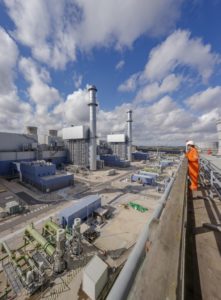
(Photo: @EDF – Chris HENDERSON)
– The third challenge relates to regulations: the future European electricity market must make it possible to decarbonise the EU economy at the lowest cost, moving past a system based on an accumulation of subsidies and a sort of “short-term dictatorship”, as these have created too much dysfunction.
This issue deserves closer analysis. I’ll cite two key characteristics as examples of that dysfunction: one is a situation of overall excess capacity and the other is the persistence of a large gap between wholesale and retail electricity prices in Europe. The latter have trended steadily higher in the past few years while the former moved lower until recently.
The causes are well known. Excess capacity is the result of the heavily subsidised solar and wind capacity that has come on stream, altering the functioning of the market and interfering with investment signals. This new capacity was added at a time when electricity demand was declining in the wake of the 2008 financial crisis. The end-result of all this is overcapacity. As for the gap between wholesale and retail prices, the excess production generated by this new capacity has driven wholesale prices down while the charges and taxes on consumers’ electric bills have risen steadily to cover subsidies, pushing retail prices up. This has created a continuously imbalanced energy market despite recent efforts to improve the situation, the most significant of them being the inclusion in the clean energy package of a requirement that renewable technologies that have reached maturity be subject to the same rights and obligations as conventional ones:
- For now, the system is working: power continues to flow through electricity markets thanks to the spot market, where prices are formed solely based on the need to balance supply and demand immediately. Improvements made in recent years to the functioning of these markets have helped make them more operationally efficient in the short term.
- However, this is being done without taking into account the capital costs of the energy consumed or interconnection costs, and therefore partially at the expense of the future. Long-term price signals remain faulty. But they are the only prices that can serve as a basis for investments in decarbonised and competitive technologies in a structurally capital-intensive sector where economies of scale are among the greatest sources of efficiency. I would point out along these lines that the EU has proved capable of moving forward: it took steps toward decarbonisation with the adoption last June of the first part of the clean energy package, setting new and more ambitious energy efficiency and renewables targets for 2030. This was the EU’s way of taking into account the very different starting points of countries while setting a target and trajectories that converge in order to give investors more visibility.
Note that there is no way to guarantee that investments in decarbonised sources will be the most competitive. In other words, the goal is not to simply launch more projects or make energy sobriety a virtue without considering its costs. The European energy transition cannot avoid the “price reality”. In this regard, the key to decarbonising the European economy while containing costs is to have a carbon price consistently above €30 a tonne. Although it was followed by a slight uptick in the carbon price, the latest reform of the EU ETS does not ensure a high enough price to trigger investment in decarbonised technology at least cost and in the long term. Furthermore, today’s carbon price still does not provide an incentive to replace old thermal power plants that operate over a large part of the year with carbon-free generation sources. New measures will thus be required soon to boost the carbon price. This would also ensure that renewables and energy efficiency are developed based primarily not on a mere target but rather on a price, guaranteeing that consumers get carbon-free electricity at the lowest cost.
Similarly, long-term contracts to develop low-carbon technologies, which are particularly capital-intensive, would provide the visibility necessary to effectively get them started with a low cost of capital, for the benefit of consumers.
– The fourth challenge is of a technological and societal nature: it relates to flexibility and making the transition fair and equitable. Security of electricity supply is determined by complex balances wherein the variability of energies and flexibility of demand play a key role, and will even more so going forward. We know that we can increase the share in the energy mix of variable renewables – solar and wind – up to 40% on average without jeopardising security of supply. But a mix with more than 50% variable renewables will require technological breakthroughs that we do not currently master. On the demand side, greater involvement of local governments and consumers will also be a key feature of the power systems of the future. Self-production and connected tools, now an integral part of local smart grids, will impact the flexibility reserves that can be called up by the power system to serve the community: examples could include times when a company wants to recharge its entire fleet of electric vehicles or when an individual or building decides to send into the power grid a portion of the electricity self-produced with solar roof panels.
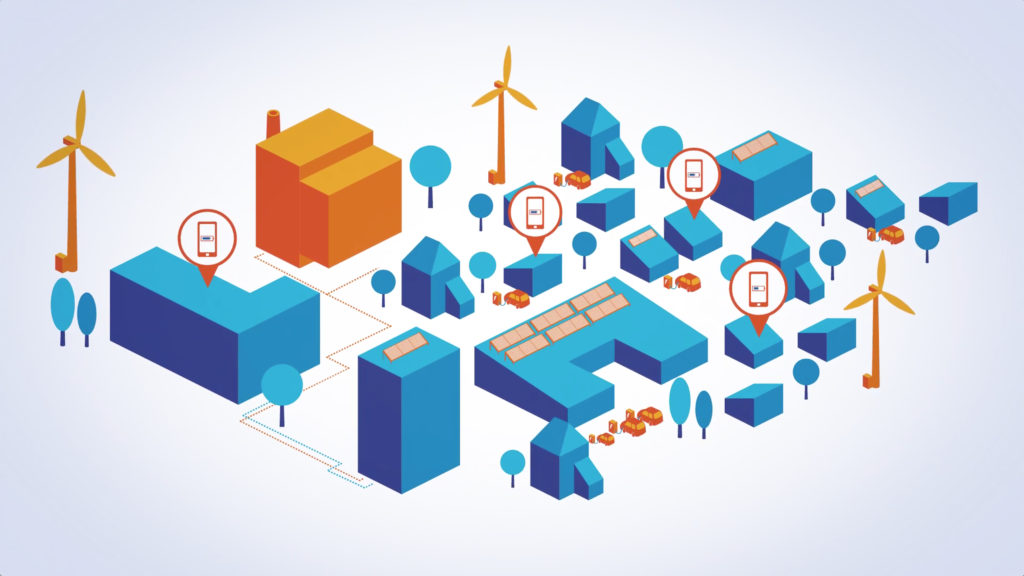
(Photo: @EDF International division)
All of this will have to be synchronised and managed with extreme care. There are two pitfalls that we believe it will be particularly important to avoid:
- First, these evolutions will need to be supported to prevent the system from ending up on the precipice of a technical disruption. Innovations in digital and artificial intelligence will definitely help us, but we must keep in mind on this critical path that a bird in the hand is worth two in the bush. For example, capacity markets will continue to provide guarantees against failures over the medium term. They will undoubtedly have to be opened to capacity from other countries: whether they are called capacity mechanisms or strategic reserves, these systems are part of the same effort to guarantee security of supply. All European countries are not equal in this regard: some are so interconnected that they are sure to have enough electricity if their systems fail, but many others must know they can rely on these types of reinsurance mechanisms if their supply is at risk. The clean energy package has taken this into account by recognizing the role these mechanisms play in the security of supply. However, by limiting these mechanisms to a temporary role, the clean energy package is making an optimistic wager on the future resilience of the European energy system.
At the same time, the smart grids of the future will also need to be resilient in the face of new threats including cyberattacks. In particular, the design of renewable energy projects currently does not include enough cybersecurity technology even though attacks are mounting. While there is specific legislation to protect critical EU infrastructure, we believe Europe could benefit from bolstering its strategic thinking about the risk cyberattacks pose to the energy systems of the future and the best protections against that risk.
- Second, free-riding, a phenomenon wherein some reap the benefits of a system developed and financed by others but do not contribute to costs, could lead to fresh imbalances. To support the development of self-consumption and self-production, it will be necessary to have a system that is fair for all and prevents the fixed grid connection costs and taxes avoided from having to be covered by others. The Commission’s proposals in the clean energy package were a timely step in the right direction.
In sum, we can see the path we need to follow, but we can also see the many pitfalls that could cause us to miss our window of opportunity for a successful energy transition over the next 30 years.
What concrete solutions is the EDF Group proposing to uphold the Paris Agreement and make the energy transition a success here in France? EDF just turned 70… is it ready for what is looking more and more like it will be a new “leap forward”?
This “leap forward”, as you call it, is what we do every day. The current energy transition is in fact the third of its kind. We had a boom in coal and hydropower after the Second World War, then the nuclear fleet was developed in the 1970s in response to the first oil shock. We had to master these technologies to make the first two transitions successful, and that’s what we did.
This third transition is being guided by climate change risks: it is forcing us to promote energy sobriety and, while still focused on the generation side, it is increasingly spilling over to the demand side as well. The goal is no longer to master one production technology but rather to be able to offer consumers and local authorities a range of high-tech solutions to address more individual situations.
EDF is undergoing radical changes and reinventing some of its businesses in response to this paradigm shift. Insofar as the energy sector is the biggest source of CO2 emissions in Europe, we are on the frontline of this battle, and developing a portfolio of increasingly diversified solutions specifically to adapt to this new paradigm.
Make no mistake: the task that lies ahead is enormous. The world will not meet the Paris targets at the current rate. After stagnating for three years, CO2 emissions have continued to increase, hitting record-breaking highs. Without a burst of progress and decisive action by the main carbon-emitting countries, cities and sectors (e.g. energy, transport and building industries, cities) between now and 2050, temperatures will continue to rise even faster, doing irreparable harm to the environment and societies (displacement of populations).
This is why fighting global warming is at the very top of EDF’s six corporate social responsibility goals: our aim is to “go beyond the requirements of the 2°C trajectory set by COP 21 by drastically reducing our CO2 emissions”. The new low-carbon strategy adopted by EDF accelerates the pace, setting a carbon-neutrality target for 2050. Though the Group is already contributing significantly to reducing the European power sector’s carbon footprint, it decided to sharply cut its own direct CO2 emissions to 30 million tonnes in 2030 from 51 million tonnes in 2017. This target implies a 40% decrease in direct emissions from the current level, which would bring emissions down to about 40g/KWh.
In this spirit, EDF is supporting the European Union in achieving carbon neutrality as part of its future long-term climate strategy. Furthermore, on this critical path, we are in favour of all reassessments of Europe’s ambition that would increase emissions reduction targets for 2030.
– To meet its drastic emissions reduction target, the Group has decided to work on different components of the power system simultaneously and in a complementary way:
– Key actions already taken include the closure of coal- and oil-fired plants on the one hand and the service life extension and development of carbon-free technologies on the other:
- Late last year, EDF launched a solar plan calling for a quadrupling of solar energy capacity in France from the current level. This unique plan will involve developing 30 GW of additional solar energy capacity between 2025 and 2035 at a cost of €25 billion, a large share of which will come from partners, investors and banks. Given decreases in costs, technological evolutions and growing acceptance of the technology, EDF is convinced that solar will play a central role in the energy transition. These investments will be made over the coming years across all regions of France, with sites added on unused land as well as on rooftops, generating many jobs to stimulate local economies.
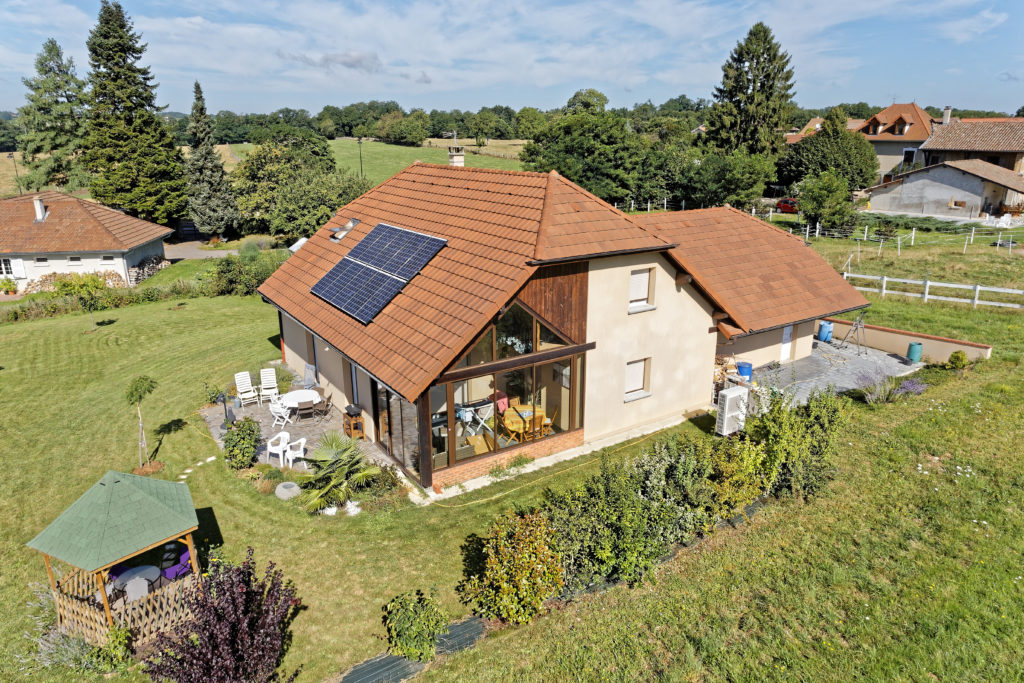
(Photo: @EDF ENR – Scannapiego©Infovision)
- Nuclear will continue to play a vital role across the world in enabling massive decarbonisation by the end of the century, and Europe should not abandon the position it occupies in that industry. As of today, nuclear makes up 27% of the European energy mix and the civil nuclear market represents close to a million direct and indirect jobs with higher skills requirements on average than other sectors. Between 2014 and 2025, France’s nuclear power plants will undergo the “Grand Carénage” life extension programme aiming to keep them in service beyond 40 years while further boosting safety. EDF’s fully amortised fleet gives France access to low-carbon, reliable and available electricity at a competitive cost. This major programme affects 110,000 direct and indirect jobs. Looking ahead, the Group’s new nuclear projects, such as those under way in France at Flamanville or in the UK at Hinkley Point, will help the global power sector continue to decarbonise. The 220,000 people employed in the nuclear industry in the French regions, in SMEs or large companies, will be called upon to work on these projects. Nuclear is in fact the third largest industry in France after the aeronautics and automotive sectors.
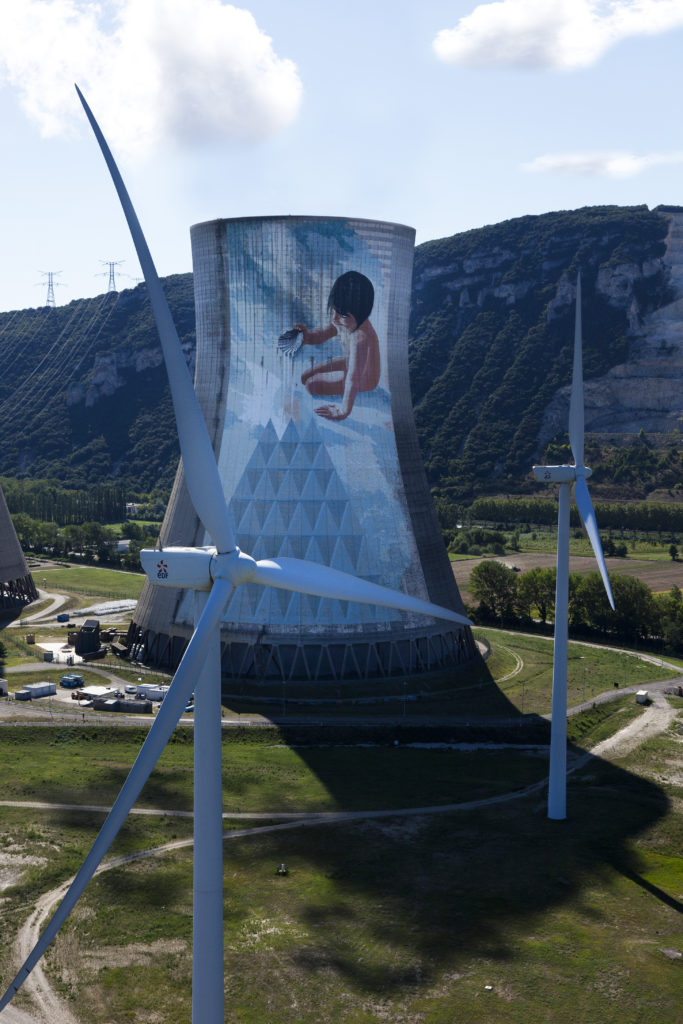
– Electricity storage is the other key area where the Group has already bolstered its presence. Costs associated with battery storage have been reduced by a factor of five in under a decade, bringing the technology out of laboratories and into actual industry. It complements the traditional means of storing electricity: hydroelectric dams. Smaller in size and with different technical characteristics and a more decentralised nature, battery storage can help make the energy transition successful by reducing the variability of renewable sources and thereby encouraging their development, guaranteeing the equilibrium and performance of large grids while promoting the development of distributed systems on the scale of individual neighbourhoods, cities or regions, and smoothing electricity demand at industrial sites to make the overall power system more efficient. Lastly, storage addresses a societal expectation about self-consumption with solutions that combine solar power and batteries. All of this underpinned EDF’s decision last year to launch a new Storage Plan. This plan calls for us to double our R&D budget for batteries and to roll out 10 GW of new storage capacity worldwide, lifting our total to 15 GW. Three key market segments targeted are:
- Storage services for power systems, at the country level or for off-grid systems (islands, relatively non-interconnected regions, neighbourhoods, etc.).
- Storage services for individual customers, companies or local authorities: EDF is responding to its customers’ growing expectations in this area by developing self-production solutions in four of its key markets in Europe (France with Mon Soleil & Moi, Italy with Edison My Sun, UK via EDF Energy and Belgium with EDF Luminus). These solutions allow customers to produce their own electricity which they can then store and consume later. The Group aims to deploy 4 GW of batteries for these services by 2035 and to capture 15% of the market in France and 10% in Europe.
- Storage services to improve access to electricity in developing countries: for populations that do not have access to electricity and live in areas which electric grids might not reach, EDF’s off-grid solutions are essential, combining solar panels and storage capacity in systems that are very simple and affordable. So far, 50,000 homes have benefited from the services in Côte d’Ivoire, Ghana, Senegal and South Africa. EDF plans to further expand its presence in this African market, for instance with its acquisition of a stake in Kenyan start-up Sun Culture, which aims to deliver solar-powered water pumps on a large scale to small farmers in West Africa. The Group’s goal is to bring electricity to 1.2 million people who currently live without it by 2035. Our efforts in this area help address a broader issue, including the projected trebling of electricity demand in the Southern Mediterranean countries between now and 2040: the local population is expected to increase by 100 million over that period, driving energy needs up by an average 90%. The European Union should partner with efforts to address this issue by supporting these future projects more systematically.
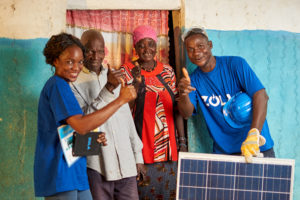
(Photo: @EDF – International Division)
– However, this third energy transition is no longer solely about the production of electricity, which is only one of the three main uses for energy: the building and transport sectors will also have to do their part to promote decarbonisation. A recent McKinsey report on ways to meet the Paris Agreement goals made it clear: reducing carbon emissions by 95% by 2050 will require 63% electrification of transport and buildings. EDF is delivering innovative solutions on both fronts:
- In energy efficiency, we already have solid expertise as an energy utility and provider of energy services with Dalkia. We have also developed open innovation approaches to acquire new skills. One example is the Métroscope start-up, which offers performance diagnostics based on artificial intelligence. Our quest to deliver efficiency services to the French regions is supported by our subsidiary Citelum, which specialises in urban services, rounding out our smart city offers with a platform for managing urban services in real time, thus improving urban planning over the long term. Another example is Copenhagen’s new Street Lab, which makes it possible to manage in an integrated manner smart parking throughout the city as well as things like pollution sensors, waste collection and humidity sensors in parks and gardens.
- The EDF Group is also introducing more initiatives in the field of transport, the second biggest carbon-emitting sector in Europe: it was the first French firm to join the EV 100 initiative, which brings together major companies working to develop electric mobility on a large scale by 2030. Along these lines, EDF has committed to have a 100% electric vehicle fleet by that year. In Europe, we see the Union’s new clean transport package as an excellent opportunity to speed up the low-carbon transition of the only sector that has had its greenhouse gas emissions increase since 1990. This includes not just electric vehicles but also charging infrastructure, the financing of the transition and the stimulation of the market through government orders for electric vehicles as well as the definition of an ambitious decarbonisation trajectory for heavy transport. The Group is already promoting electric mobility by developing and operating charging infrastructure – 3,000 stations in place today – as well as mobility options that allow individuals, companies and local authorities to transition toward low-carbon solutions. Electric vehicle development is expected to make a great contribution to decarbonising transport by 2030 while only driving a limited increase in electricity demand: an electric vehicle consumes about the same amount of power per year as a water heater. Having a fleet of 125 million electric vehicles on the road in Europe in 2030 – which corresponds to half the existing fleet – should lift annual power demand by 0.75%. The Group will also continue to help local authorities identify the turnkey electric transport solutions that best suit their needs.
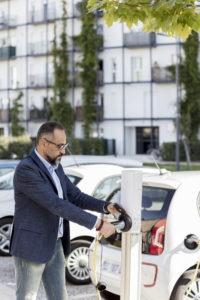
The EDF Group has an electric mobility offering that includes electric vehicle charging stations for multifamily housing such as seen here, in the eco neighbourhood of Issy-les-Moulineaux in the Ile-de-France region.
(Photo: @EDF – Jean-Lionel DIAS)
This wide range of solutions creates many possibilities for EDF’s customers, and those who manage the regions where we operate, to optimise the performance of their smart homes, smart charging, smart cities, etc.
What all these possibilities have in common is that they will lead to increased energy sobriety and a wider distribution of uses, ultimately giving us better control over our carbon footprint. This will remain a cornerstone of our Group’s low-carbon strategy and of the European Union’s key priorities for many years to come. The energy transition is an opportunity that Europe must seize. As we’ve seen, EDF is willing to do its part alongside institutions, its partners and its customers.





